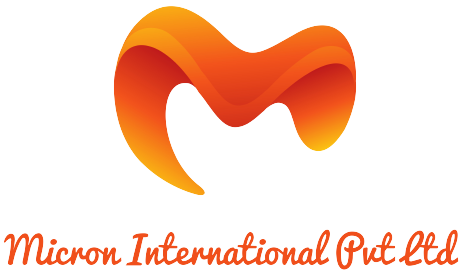Content
Interaction between the individual team members, cross-functional teams working on the project related to the processes and project management tools involved. Reviewing work and finding possible improvements is always a worthwhile endeavor. This should be done regularly to implement improvements in the workflow and on the project as fast as possible. In Scrum, sprints generally last between 1 and 4 weeks, and during these, the development team completes certain parts of the pre-established goals. Agile is an iterative process that allows structured teams to remain focused and deliver the best work possible. Businesses that have adopted these methodologies can quickly react to market changes, delivering the best product possible to their clients.
Developers create technical solutions such as models and layouts to meet client requirements. It describes the project’s purpose, goals, flow, and integration points. It is transformed into a physical design using hardware and software technologies. Project managers may want defined processes that outline cost, time, and design requirements. The Waterfall method is the best choice when the project meets those constraints. Application of the Agile model depends on your company’s development teams’ process, size, goals, and needs.
- A well-structured development process enables organizations to quickly develop high-quality software that is both well tested and ready for use.
- Feedback can be collected and passed to the developers, who will implement it in future iterations.
- The inception stage entails obtaining further feedback from stakeholders to flesh out the requirements through a diagram and identify the product’s functionality.
- The Scrum team selects the most important user stories and breaks them up into smaller tasks.
- This information also assists in demonstrating how the stages are linked to the project’s overall goal and how they are connected to one another.
Each methodology has slight variations in the phases of software development. Furthermore, even though the goal is the same, each team’s process flow may vary depending on each specific project or situation. As an example, the full Agile software development lifecycle includes the concept, inception, construction, release, production, and retirement phases. SDLC stands for software development life cycle, and it is a process used to create software. The process involves a series of steps that allows for the design, development, testing, and deployment of software. This process is used by software engineers, developers, and other professionals in the industry.
What is Agile software development?
The bottom line is that today’s world still needs the rigidity of the Waterfall model and the flexibility of the Agile approach. It is only necessary to remember that communication is critical when mixing the two in the same environment. Product performance is guaranteed, and there is no way to revise any step. With the V-shaped SDLC model, you cannot go back a step to fix or add something. If your product is new, has many features that need to be implemented, or is unsure of the final functionality, this model is unlikely to suit you. Motivated people create projects in the right environment and with the proper support.
Survey Surfaces Agile Development Challenges – DevOps.com
Survey Surfaces Agile Development Challenges.
Posted: Fri, 09 Dec 2022 08:00:00 GMT [source]
After going through these various testing stages, the software is ready to go live. Try to lower the initial requirements and identify what features really matter and what can be worked on later. This will help development teams work harder on the core features and prioritize what matters the most to clients. As with other Agile processes, there are no hard and fast rules. The Agile system development life cycle described above is not set in stone and can be updated and adjusted as necessary within your business or project.
For this example, let’s assume that the project is split into eight releases of 4 weeks each. The system needs to be updated to a newer version to enhance the business model. Commonly known as the “stand-up meeting,” – it takes place for no more than 15 minutes.
Agile helps you reduce or eliminate wasteful and meaningless activities. Possibility of parallel development and delivery within a familiar planned context. We have inspected this report as we at Relevant also use the Agile methodology to deliver software. Solving these issues in the inception phase in agile is very important to quality work on the project. Developers would spend the remaining time on user acceptance testing by the marketing team.
Internalize the values and principles to shift your mindset
Team members need to discuss and establish a maintainable pace at which they can comfortably operate and deliver working software on a regular basis. When this principle is applied in practice, its main goal is to avoid professional burnout and the necessity of heroic deeds. The work discovery phase, design, and production are executed separately by individual teams. Within true Agile, all the teams should collaborate during the whole project.
In addition, this principle facilitates better validation of implemented ideas and approaches. As we can see, the satisfied customer is the top priority of all the 12 principles. Early and continuous delivery helps meet customers’ needs and increases the return of investment . Regularly receiving working software also makes customers much happier, as they are usually not huge fans of waiting for updates. By applying this principle, the software developers will be able to respond to challenges much faster.
See how easy it is to create a Kanban board in Smartsheet
These are people possessing a particular interest in a product as they expect to get benefits after its release. The product served well, and now it’s time to replace it with a newer one. The publisher of a product notifies their clients about the end-of-use and prepares it for retirement. In the end, developers carry out the last end-of-life activities and close the support. For example, if your users increase by 30,000 over a timeframe of six months, you’d most likely need to add more servers to ensure that your system runs smoothly. You would also get some feedback from your customers regarding things like usability, practicality, or improvement ideas, which you can decide to incorporate.
Planning, requirements, design, build, document, test, deploy, maintain is a typical six to eight-step process. After completing all the previous stages of development, the development team presents to the owner the result achieved in meeting the requirements. After that, the Agile software development phases start over – either with a new iteration or moving to the next stage and scaling Agile. The software owner meets with the software development team and introduces them to the requirements outlined in the first step. The group then discusses the sequence for introducing functions and identifies the essential tools – the programming language, syntax libraries, and basic frameworks.
What Is the Scrum Master Role in Agile SDLC Methodology?
It provides a framework that organizations can use to ensure the successful development and delivery of software products. Interviewing potential candidates who have experience in SDLC is an important part of the software development recruitment process. Asking the right questions can help you to identify the right candidate for the job. In this article, we will discuss some of the common SDLC life cycle interview questions.

User stories need to be made as small as possible, as the average Sprint only lasts 2 weeks. Scrum divides a project into short iterations, usually cloud team between 1 – 4 weeks in length. The Scrum Master leads the team, and they work together to deliver an iteration at the end of each Sprint.
They further highlight the differences between each SDLC model. One reason behind this is the extended time frames typical of traditional cycles — most startups and smaller companies don’t have the financial runway to wait that long. They are faced with the harsh realities that competitors can beat them to market with a final product or their customers have already moved on to the next shiny solution.
Features
Instead, a cross-functional Agile team uses a flat structure under which team members work independently of each other and organize their tasks by themselves. Various methodologies have been developed for Agile testing processes. Completing these phases effectively can help you implement Agile testing and deliver the best results for your stakeholders. Each Kanban team can choose the columns on their board to suit their needs.
The development life cycle of agile methodology is an organized series of phases that a project goes through from start to end. These stages are concept, inception, release, maintenance, and retirement. However, the life cycle may slightly differ depending on the agile methodology determined by the team. Software Development Life Cycle is a process of maintaining or building software applications/services/systems.
The team that has to be pushed by its leader on a regular basis should revise its whole approach. All these aspects of the development process make it much more agile. Operational excellence makes the difference between a true professional and an ordinary team member. The main goal of this principle is to achieve the synergistic effect between the people who make software and those who use it for their own purposes. The aim of Nexus is to help Scrum master scale Scrum framework for big projects without losing flexibility.
In 2022, the world of Agile software development has become super complicated. There are myriads of methodologies available for different business needs and management styles. Whether you manage a small team or administrate enterprise-scale product development, there is always something for you.
Digital Design
Agile development focuses on mitigating risks to improve the overall efficiency of the software development life cycle. A significant advantage of Agile development is that everyone can be involved in the development process. With the best Agile project management software, team members can communicate effectively and deliver highly functional software solutions in less time. This can lead to an increase in the overall productivity of the team since there is no room for any miscommunication. Essential updates or changes can be shared across the team easily with real-time alerts. Agile software development uses an iterative approach to design and development.
The idea is that they can gather as many details as possible—that way, it’s easy to understand more about the client’s expectations. Agile phases will usually have a specific purpose for the overall development of the project. These phases are then repeated into what are called agile cycles .
The product owner needs to know the user stories that were completed during the Sprint, while the development team should prepare to demonstrate full, releasable functionality. Project planning is the key to successful product delivery within the agreed timeline and budget. Because Brocoders uses proper project planning, our team experiences better risk management, improved motivation, and boosted coordination.
